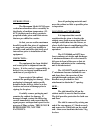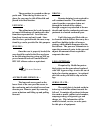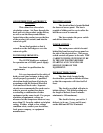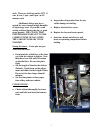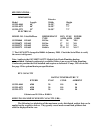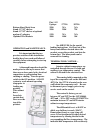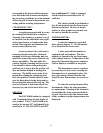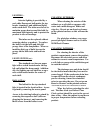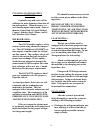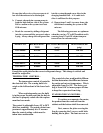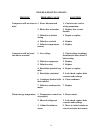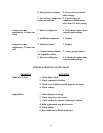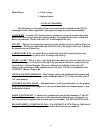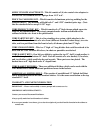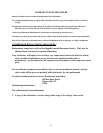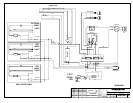
12
CLEANING STAINLESS STEEL
SURFACES
–
Generally soap and water will be
sufficient for most cleanings when done of-
ten and regularly. When necessary, sev-
eral cleaning agents can be used. Some of
themare Comet, Bab-O, Liquid NuSteel,
Cooper’s Stainless Steel Cleaner, and Al-
len’s Stainless Steel Cleaner.
REFRIGERATION
–
The GSVM models employ a refrig-
eration system using a hermetic compres-
sor. The GSVM4060 and GSVM4072 sys-
tems employ a capillary tube for refriger-
ant flow control. The capillary tube is sol-
dered to the suction line pull-out coil for
proper heat exchange. If the capillary
should become plugged or damaged for
some reason it is best to replace the whole
heat exchanger with a new one. Consult
the factory for the proper replacement.
The GSVM-5272 employs a bleed
port type expansion valve for proper re-
frigerant control.
As stated previously, these cases are self-
contained with the condensing unit
mounted at the bottom. They are
equipped with a hermetic compressor and
a capillary tube. The condenser is of fin
and tube construction and SHOULD BE
PERIODICALLY CLEANED TO MAIN-
TAIN EFFICIENT OPERATION.
If for any reason the cabinet must
be recharged, consult the serial plate found
inside the cabinet for the proper refriger-
ant charge and weight.
If it should become necessary to leak
test the system, please adhere to the follow-
ing notice:
BECAUSE OF THE CFC ATMOS-
PHERIC CONSIDERATIONS BEING
TAKEN TODAY, WE ASK THAT LEAK
TESTING BE DONE WITH REFRIGER-
ANT 22 MIXED WITH NITROGEN
LEAK TESTING
–
The test gas cylinder must be
equipped with a pressure gauge and regu-
lator so that system test pressures do not
exceed maximum allowable limits. Do not
ever use anything other than a R-22/
Nitrogen mixture for leak testing.
Attach a refrigerant test gas cylin-
der to your service manifold and connect
the manifold to the charging port on the
liquid line valve.
Charge an R-22/Nitrogen mixture
into the system, raising the pressure to the
unit’s nameplate for the low side and high
side pressures. Using an electronic detec-
tor, carefully check the entire system for
leaks. Take special care to inspect all
brazed and flare connections.
EVACUATION
–
After the system is proven leak
tig ht, thor oughly ev acu ate the s yst em ac-
cording to the following procedure:
a. Discharge the refrigerant-nitrogen mix-
ture, allowing it to blow from the sys-
tem as rapidly as possible, into any
empty cylinder.



